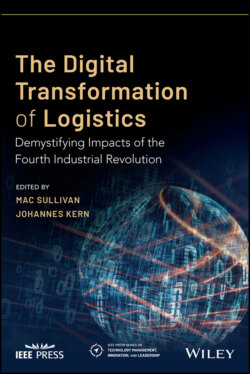Читать книгу The Digital Transformation of Logistics - Группа авторов - Страница 52
Security
ОглавлениеWith increasing amounts of data transferred between the connected Things and increasing relevance of and dependability on data to manage supply chains, the security of data transfer, data handling, and data storage needs to be looked at. Any connected smart Thing could be a potential target for cybercriminality as it could grant access to a company’s network. In recent years, a lot of “leaks” stories in social media and the financial world have clearly shown the importance of data security. For a further extension of a connected supply chain, it will be crucial to ensure secure data exchange between the Things and the actors along the supply chain, like the customer, their supplier, logistics service provider, and customs agencies. Technologies like blockchain might provide a solution for this secure data transfer and secure identification.4
To ensure trust and security in digital systems, Bosch has launched an initiative and invited different supply chain partners to the first Digital Trust Forum in Berlin on 16 May 2019. Representatives from leading international associations and organizations, including the Institute of Electrical and Electronics Engineers (IEEE), DigitalEurope, European Telecommunications Standards Institute (ETSI), the Eclipse Foundation, Trustable Technology, Plattform Industrie 4.0, the Industrial Internet Consortium (IIC), and the Trusted IoT Alliance, came together to discuss this topic.
With more Things connected, and more data being transferred, the capability or bandwidth of the “connecting technology” to transfer large amounts of data in a fast way has become a huge business. If short reaction times are needed, but the latency of the data transfer to and from a “center of decision making” is too long, certain applications might not work. Further innovations in connecting technology, like 5G, are on the way to provide such solutions. Another approach to come up with fast decisions on the Thing level is to avoid data transfer to a central brain and to have built‐in computing power and intelligence on the Thing level, which is referred to as “edge computing.”5 To share these decentral decisions and their results across the whole system and to enable big data learning for a continuous improvement process, a transfer of data from the Thing to a central data pool, a so‐called data lake, is still needed. Fast reaction or decision can be achieved through local, decentral intelligence while the continuous improvement process is based on big data on a central level.
